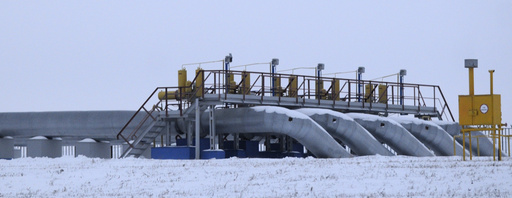In the midst of Russia’s invasion of Ukraine, Russian natural gas continues to flow through Ukraine’s pipelines to European customers, even as Ukraine reportedly takes control of a gas measuring station near Sudzha in Russia. The pipeline system carries natural gas from West Siberia through Ukraine to European countries like Austria, Slovakia, and Hungary, where it is used for electricity generation, industrial processes, and heating homes. Despite the conflict, gas flows as usual through the Sudzha measuring station, with 42.4 million cubic meters passing through on a recent day.
The ongoing transit of Russian gas through Ukraine is due to a pre-war agreement between Ukraine and Russia that runs through the end of this year. Under this agreement, Russia sends set amounts of gas through Ukraine’s pipeline system to Europe, earning money for Gazprom and transit fees for Ukraine. With Russia supplying around 40% of Europe’s natural gas before the war, the halt in gas supplies through other pipelines has caused an energy crisis in Europe, leading to increased costs and a push to reduce dependence on Russian gas imports by 2027.
Although only about 3% of Europe’s gas imports flow through Sudzha, which accounted for roughly 15% of imports from Russia last year, concerns about energy security persist. European countries like Austria, Slovakia, and Hungary may need to seek alternative gas supplies if the flow through Ukraine is disrupted. Despite the EU’s goal to end imports of Russian fossil fuels by 2027, some countries have increased their imports of Russian gas in recent years, while others have diversified their sources to include LNG shipments and deals with countries like Turkey to indirectly receive Russian gas.
While efforts to reduce reliance on Russian gas are underway in Europe, challenges remain due to high inflation and economic crises in some countries. The dependence on Russian energy sources exposes Europe to geopolitical risks and underscores the complexities of transitioning to more diversified and sustainable energy supplies in the region.



